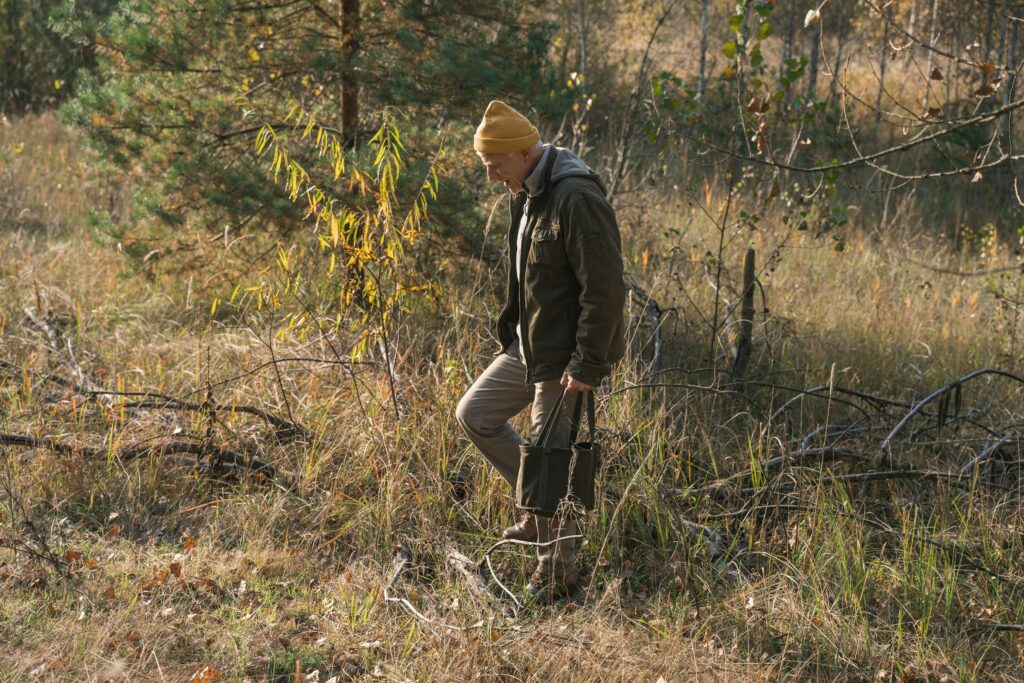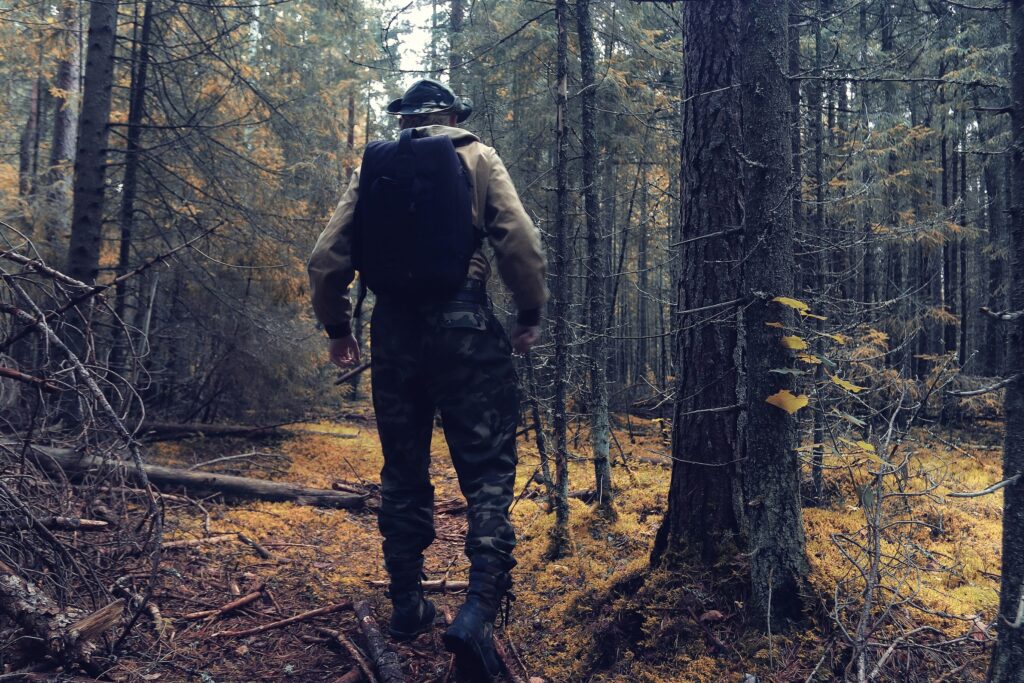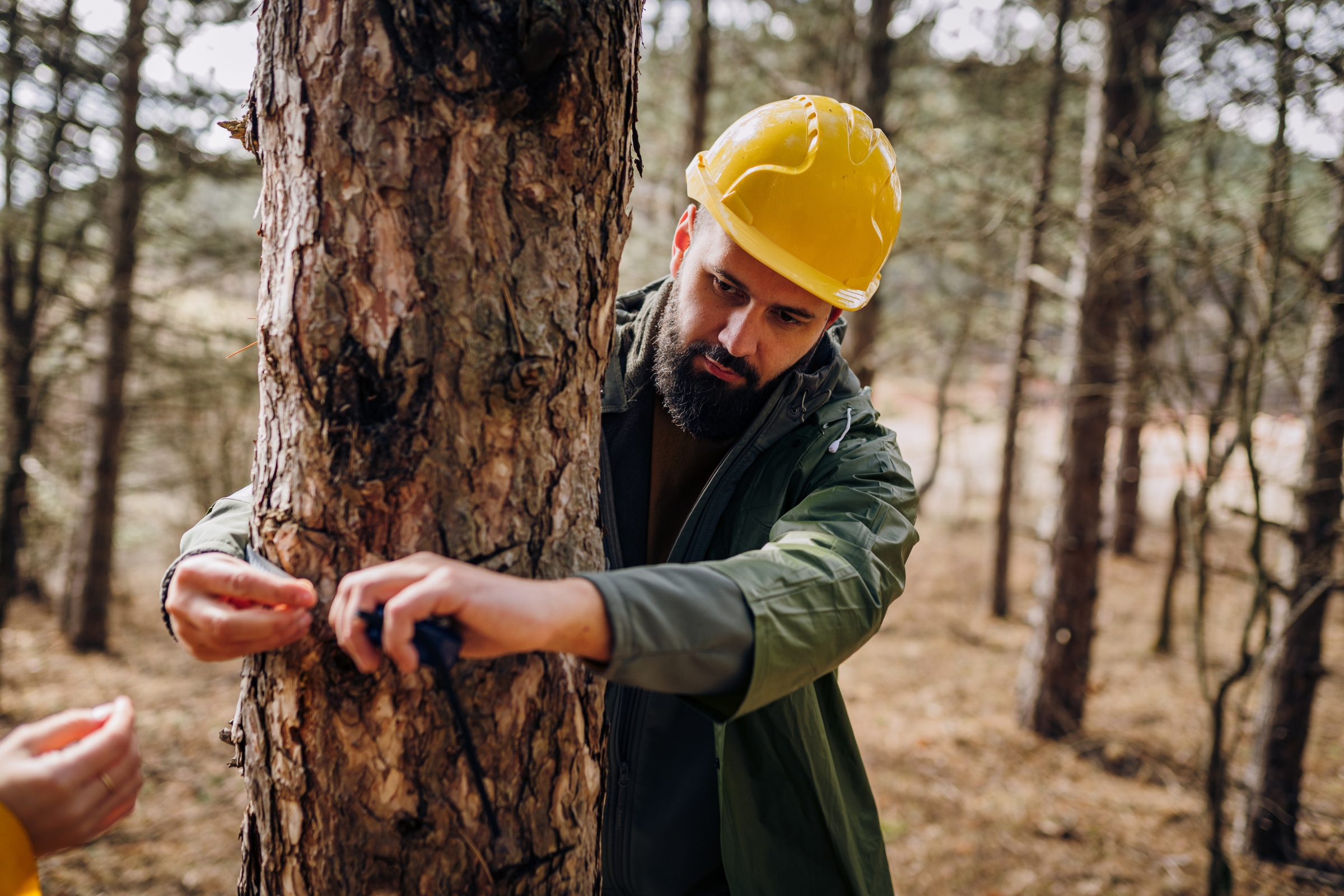When it comes to stewardship of our nation’s natural resources, the roles of a “park ranger” and a forest ranger are often confused. Park rangers typically work within state or national parks, focusing on visitor engagement, education, and enforcement of park regulations. Their presence is vital in preserving the delicate balance between public enjoyment and protection of natural landscapes. Contrastingly, forest rangers operate in broader, often more remote, wilderness areas, overseeing the conservation and management of forest ecosystems on a larger scale.
Despite the differences, both careers share a common goal: the conscientious care of our nation’s cherished wildlands. Whether guiding hikers on scenic trails or combating wildfires in sprawling forests, these professionals are the unsung heroes of America’s open spaces. Their daily contributions ensure that state and national parks, as well as vast forest regions, continue to thrive for future generations to enjoy.
Understanding the Roles: Park Ranger vs Forest Ranger
Park rangers typically serve as the face of national and state parks, conducting tours and educational programs, engaging in public outreach, and responding to emergency calls. They are often involved in law enforcement within the park boundaries, ensuring visitors comply with conservation laws.
In contrast, forest rangers may focus more on fire prevention, managing national recreation areas, and conserving wildlife habitats across broader territories. Both roles are crucial aspects of the United States’ commitment to conservation efforts and public service.
Core Responsibilities of a Park Ranger
In their pivotal role, park rangers typically engage with the public to educate and ensure safety within the park’s confines. They respond to a variety of situations, from medical incidents to lost hikers, and are trained to handle emergency calls with professionalism and care. These rangers are at the forefront of visitor experience, helping to make each trip to state or national parks memorable and safe.
The Diverse Duties of a Forest Ranger
Forest rangers, on the other hand, immerse themselves in the vastness of our nation’s woodlands, where their duties span a wide range. They may conduct wildlife surveys, enforce hunting regulations, and manage natural resources. Their work often takes them into remote areas, where they are instrumental in wildfire management and maintaining the health of the forest ecosystem.
Comparing Jurisdictions and Operating Environments
The scope of jurisdiction for park and forest rangers significantly differs. Park rangers typically focus on the well-being of specific state or national parks. These settings range from historical sites to diverse ecological areas where rangers manage both the land and the experience of visitors. Forest rangers, however, oversee larger, often less-visited tracts of public forests and grasslands, implementing policies that affect the landscape on a broader scale.

The Journey to Becoming a Ranger
If you’re passionate about the outdoors and eager to protect our natural heritage, becoming a ranger can be a fulfilling career path. The journey begins with a love for nature and a commitment to its preservation, followed by the necessary education and training to succeed in this vital field.
Educational Foundations for Aspiring Rangers
An aspiring ranger’s educational background lays the groundwork for a career in conservation. A strong foundation in environmental science, wildlife management, or a related field can provide the knowledge and skills needed to excel in either park or forest ranger roles. Understanding the complexities of ecosystems and human impact is essential for those looking to protect and manage natural areas.
• Necessary Degrees for Park and Forest Rangers
A degree in environmental science, biology, or natural resource management is often a prerequisite for park and forest ranger positions. This education equips rangers with a deep understanding of the ecosystems they will protect and manage.
• Valuable Certifications and Specialized Training
Specialized training, particularly in law enforcement, is critical for rangers tasked with upholding park regulations and ensuring visitor safety. Law enforcement training prepares rangers to address violations and maintain order in these protected areas.
Gaining Relevant Experience in the Field
Gaining hands-on experience is an integral part of becoming a ranger. Volunteering, internships, and seasonal work in parks or forests offer valuable insights and practical skills that can distinguish candidates in the hiring process.
Navigating the Application and Hiring Process
The application and hiring process for ranger positions can be competitive. It’s crucial to showcase your education, experience, and passion for conservation. Tailoring your application to highlight relevant skills and experiences will help you stand out to potential employers.
A Closer Look at Salary and Job Outlook
While the love for nature drives many to pursue a ranger career, it’s also important to consider the financial aspects. Salaries vary based on location, experience, and specific roles, with the national average offering a general benchmark.
What Park Rangers Earn: An Overview
Park rangers’ salaries can range based on their specific duties, the size and location of the park, and their level of experience. Entry-level positions may start lower, but opportunities for advancement can lead to increased earning potential.
Forest Ranger Compensation Trends
Forest rangers’ compensation reflects the complexity and scope of their responsibilities. Trends indicate that salaries may vary with government budgets, environmental policies, and the demand for forest management and conservation expertise.
Projected Demand for Rangers in Protected Areas
The demand for rangers in protected areas is expected to grow as the importance of conservation becomes increasingly recognized. Climate change, biodiversity loss, and a growing population of outdoor enthusiasts all contribute to the need for skilled professionals to manage and protect these precious resources.

Differentiating Daily Lives: A Ranger’s Routine
Imagine the fresh scent of pine and the sound of birds chirping as you start your day. Whether in the role of a park or forest ranger, each morning greets you with unique responsibilities and the promise of new challenges. The serene beauty of nature is your office, but the tasks at hand are far from tranquil. Let’s delve into what sets apart the daily lives of those who protect and manage our cherished natural spaces.
The Work Environment of a Park Ranger
As a park ranger, your office might be the great outdoors, under the canopies of national parks or the historic grounds of monuments. You’re likely collaborating with park managers and superintendents to ensure visitors enjoy a safe and educational experience. Every corner of the park presents a new setting, from visitor centers to remote backcountry trails, each demanding adaptability and a passion for public service.
Day-to-Day Activities of a Forest Ranger
Deep within the vast expanses of our nation’s forests, a forest ranger’s day is immersed in conservation efforts and land management. You’re the steward of wilderness, conducting patrols, fighting wildfires, and managing forest resources. Regardless of the weather or the remote location, your commitment to protecting these resources is unwavering, as you navigate a diverse set of duties far from the beaten path.
Challenges and Rewards Unique to Each Role
Every day as a ranger brings its own set of challenges, from enforcing park rules to conducting search and rescue operations. The rewards, however, are just as unique. Park rangers may revel in educating the public, while forest rangers find satisfaction in preserving the health of forest ecosystems. Despite the trials, the fulfillment of safeguarding natural treasures and fostering environmental stewardship fuels your dedication.
Exploring Specialized Ranger Paths
Specialization in ranger roles allows for a focused impact on specific areas of park and forest management. From educating the public to enforcing the laws that protect these spaces, specialized rangers play critical roles in the conservation narrative. Let’s explore the distinct paths that cater to varied interests within the realm of ranger careers.
• Interpretive Rangers: Connecting People and Parks
As an interpretive ranger, you bring the park’s stories to life through educational programs and historical re-enactments. You’re instrumental in connecting visitors with the park’s natural and cultural heritage. The average annual salary of a park ranger in this role reflects the specialized knowledge and engagement skills required to inspire visitors and enhance their appreciation of the protected landscape.
• Law Enforcement Rangers: Guardians of Natural Law
Law enforcement rangers stand as the guardians of our parks. Your ranger duties extend beyond standard patrols, as you conduct guided tours, engage with park visitors, and ensure the safety of both the people and the protected lands. As an interpretive park ranger, you balance enforcement with education, preserving the sanctity of these treasured environments.
• Wildlife Conservation Rangers: Protectors of Biodiversity
Wildlife conservation is at the heart of your role as a ranger dedicated to protecting biodiversity. Park rangers and wildlife conservationists work hand-in-hand to monitor habitats, manage species populations, and implement recovery plans for endangered flora and fauna. Your expertise contributes to the delicate balance of our ecosystems and their long-term sustainability.
• The Unique Role of Game Wardens
Choosing the career path of a game warden means you specialize in the enforcement of fish and wildlife regulations. You patrol wildlife refuges, remote areas, and national wildlife preserves to prevent illegal hunting and protect natural resources. Your vigilance ensures the balance of our ecosystems and the ethical treatment of wildlife within park boundaries and beyond.
Career Growth and Advancement Opportunities
As you gain experience in the ranger field, opportunities for career growth and advancement emerge. Whether you aspire to climb the ranks within park management or the forest service, your dedication to the profession paves the way for leadership roles and a more profound impact on conservation efforts.
Pathways to Park Ranger Supervisory Roles
For those seeking leadership, the pathway to supervisory roles is paved with experience and education. A park ranger has an average salary that can grow with the acquisition of supervisory responsibilities. To reach such positions, one often needs a deep understanding of park operations and proven skills in management and public engagement.
Advancing in the Forest Service Hierarchy
Within the forest service, rangers can progress through the ranks, from field agents to management positions. Service rangers with a commitment to forest conservation and the skills to lead teams may find themselves in roles that influence policy, direct large-scale projects, and contribute to national forestry strategies.
Continuing Education and Professional Development
For those pursuing this career, a bachelor’s degree in environmental science or a related field is often just the beginning. Continuing education and professional development are vital to keeping up with evolving conservation practices, advancing in the field, and making a lasting impact on the preservation of our natural resources.
Career Transitions: From Ranger Roles to Conservation Leadership
Embarking on a journey as a ranger can be the first step toward leadership in conservation. Your hands-on experience managing earth science issues and public lands prepares you for advanced roles. Many rangers evolve into conservation leaders by leveraging their field knowledge and operational expertise. These positions might include park superintendents, forest managers, or policy advisors, where your practical insights can influence broader environmental strategies and initiatives.

Preparing for a Ranger Career: Degrees and Courses of Study
To prepare for a rewarding ranger career, focus on building a robust educational background in environmentally related fields that will equip you with the necessary knowledge and skills.
Bachelor’s Degrees in Environmental Fields
If you’re looking to become a ranger, pursuing a bachelor’s degree in environmental fields is a smart move. Degrees in natural sciences, wildlife management, or earth science provide a solid foundation for understanding the complexities of ecosystems and public lands management. These programs often include courses in ecology, conservation biology, and environmental policy, which are critical for a career dedicated to protecting and preserving natural habitats.
Master’s Programs for Advanced Ranger Knowledge
For those aspiring to climb higher in their ranger careers, master’s programs offer an opportunity to deepen your expertise. These advanced degrees can focus on specialized areas such as environmental law, advanced earth science, or public lands administration. With a master’s degree, you’ll be well-prepared to tackle the intricate challenges of park and forest management and to lead teams in the stewardship of our natural resources.
Hybrid Learning and Online Education Options for Rangers
In today’s digital age, hybrid learning and online education options provide flexibility for rangers seeking to advance their educational background. Online courses can accommodate your busy schedules and allow you to access specialized training in fields like GIS, wildlife conservation, and environmental education. These programs enable you to enhance your skills and knowledge while maintaining your vital role in the field.
The Future of Ranger Roles in Conservation Efforts
Anticipate how the evolving landscape of conservation will shape the future of ranger roles.
Emerging Technologies in Park and Forest Management
Emerging technologies are revolutionizing park and forest management, with rangers at the forefront of adopting these tools. From drones for monitoring wildlife to data analytics for tracking visitor patterns, technology is enhancing the efficiency and effectiveness of ranger duties. These advancements allow for better resource management and a proactive approach to preserving the natural beauty of our parks and forests.
Global Conservation Trends Impacting Ranger Careers
Global conservation trends are reshaping the ranger profession. With a growing emphasis on sustainability and biodiversity, rangers must adapt to new conservation practices and international standards. Climate change and its effects on ecosystems also demand that rangers expand their knowledge and skills to effectively manage and protect affected areas. Staying abreast of these trends ensures that rangers remain relevant and impactful in their careers.
The Role of Rangers in Climate Change Mitigation
Rangers play a pivotal role in climate change mitigation by managing public lands with resilience in mind. By overseeing reforestation projects, controlling invasive species, and educating visitors about sustainable practices, rangers contribute to the global effort to combat climate change. Their on-the-ground actions and commitment to ecosystem health are vital in buffering the impacts of a changing climate.
Cultivating Passion for the Outdoors: Ranger Career Inspiration
Embark on a journey that aligns your passion for the outdoors with a meaningful and fulfilling career as a ranger.
Highlighting Role Models in Park Ranger Positions
Imagine looking up to figures like Shelton Johnson, the Yosemite Park Ranger who brings history to life for visitors, or Betty Reid Soskin, the oldest serving park ranger who shares her experiences with the public. These individuals embody the spirit of the profession, inspiring you through their dedication to preserving natural spaces and enlightening the public about their importance.
Forest Ranger Advocacy and Community Impact
Forest rangers like Jad Daley, President and CEO of American Forests, play a crucial role in advocating for the nation’s woodlands. Their work extends beyond the trees; it involves engaging communities, influencing policies for sustainable forest management, and ensuring the health and renewal of forest ecosystems for future generations.
Networking and Professional Organizations for Rangers
Joining organizations such as the National Association of Park Rangers or the Society of American Foresters opens doors to a community of professionals. These groups offer networking opportunities, provide updates on best practices in resource protection, and support your growth through educational workshops and conferences.
Conclusion: Park Ranger vs Forest Ranger
Choosing the life of a ranger, whether in the parks and national forests that embody our country’s natural and historic splendors, or within the diverse landscapes overseen by the Department of Interior, is to embrace a profound commitment to conservation and stewardship. Rangers are employed not just to manage these treasured lands, but to serve as the bridge between the wilderness and the public.
While the day-to-day responsibilities might differ—like a conservation officer overseeing cattle grazing regulations or a park management team coordinating educational programs—the essence of a ranger’s work is rooted in a dedication to the natural world. It is a profession defined not just by the landscapes that rangers protect, but by the passion and knowledge they bring to their roles. Your path to becoming a ranger, whether patrolling the vast expanses of forests or guiding visitors through the stories of our national heritage, is a journey towards safeguarding the very soul of the great outdoors.





